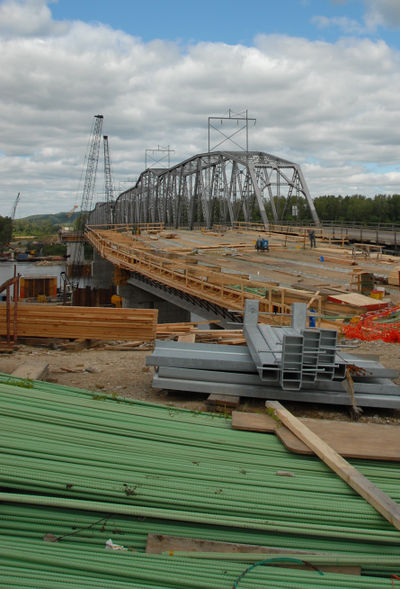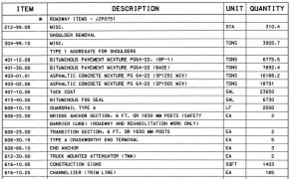237.3 Summary and Tabulation of Quantities
| Form |
| Form D-2BS |
Quantities for a project are summarized and tabulated by the use of (1) summary of quantities 2B sheet and (2) tabulation of quantities sheets. Arbitrary quantities primarily used to establish a unit bid price are not to be included. The use of arbitrary quantities can cause unbalanced bidding and can result in excessive costs and potential litigation.
2B Sheet
The 2B sheet is a summary of all quantities from the plan-profile sheets of a project. In addition to summarizing, the 2B sheet also supplements details shown on the plan-profile sheets by providing additional detail information.
The 2B sheet is prepared by the district on Form D-2B. Care is exercised to place items on the D-2B sheet(s) in a systematic manner, usually by pay item, to simplify locating construction items on the sheets. If more than one sheet is required, the sheets are numbered “Sheet 1 of _____”, “Sheet 2 of _____”, etc. Reference is made on the sheets to the plan-profile sheet to which the data applies.
Form D-2BS is used to summarize signs and other items used on the traffic control plans. This form is available in two formats, one sheet for full size plans (22 in. x 34 in.) and three sheets for sketches (8 ½ in. x 11 in.). Both Form D-2B and Form D-2BS are available on CADD.
Continuous job-length quantities, such as paving, are to be broken down into quantities by plan sheet or other convenient breaking point. Each item for “Removal of Improvements” is listed, along with a brief description, quantity, and the station, offset, and plan sheet number of that item. Culvert cleanout is shown with the station, plan sheet number, type, size, and length of culvert. The limits of cut compaction and the quantity of excavation, borrow, or embankment needed for any approved crashworthy end terminals are also shown.

